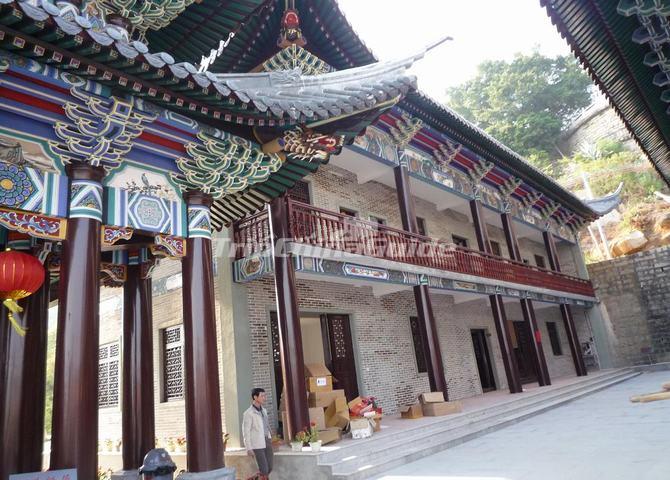Xiyuan Temple
Xiyuan Temple is located on the Liuyuan Road, Suzhou City. It is the largest temple within Suzhou. It was initially built during 1264-1294 and named as Guiyuan Temple. Then during the reign of Emperor Jiajing in the Ming Dynasty (1368-1644), its name was changed into Xiyuan. During the reign of Emperor Chongzhen, the temple was one of the famous sites for Buddhist worship. During the reign of Emperor Xianfeng in the Qing Dynasty (1644-1912), the temple was destroyed in the war, and then in the reign of Emperor Guangxu the temple was rebuilt by Monk Guanghui, rename the temple as "Xiyuan Jiechuang Temple", which is commonly called "Xiyuan Temple".
Most of the architectures in the temple were built in the late Qing Dynasty. From south to the north, there are the archway, gate, Jingang Hall, Life-Releasing Pond, Great Buddha's Hall and Sutra Collection Pavilion. To the east of the Jingang Hall, there is the Guanyin Hall; while to the west is the Arhat Hall.
The Arhat Hall is the most unique architecture in the Xiyuan Temple. In the center of the hall, there is a statue of one-thousand handed and one-thousand eyed Guanyin. Around it, there are 500 arhat statues, which are different manners and as big as real persons. The most impressive one is the statue of Jigong, which is vivid and delicate. It is the only Arhat hall in the southeast coastal area of China.
In the Western Garden of Xiyuan Temple, there is the Life-Releasing Pond, around which there are pavilions, halls and corridors. In the pond, there is a Huxin Pavilion, which is connected with the bank by zigzag bridges. Many fish are playing in the pond as well as many turtles. Among all the turtles, there is one with more than 300 years old. Only in hot summer, the turtles come out of the pond and play on the bank.
Ask Question
Recommended China Tour Packages
In this section
- Suzhou Gate to the East
- Mountain Villa with Embracing...
- Lingering Garden
- Humble Administrator's Garden
- Guangqian Street
- Confucian Temple
- Surging Waves Pavilion
- Retreat and Reflection Garden
- Garden of Cultivation
- Twin Pagodas at Luohanyuan Templ...
- Suhzhou Embroidery
- Suzhou Kun Opera Museum
- North Temple Pagoda
- Couple's Retreat Garden
- Baodai Bridge
- See more
Find China Tours
Cities and Attractions interested in














